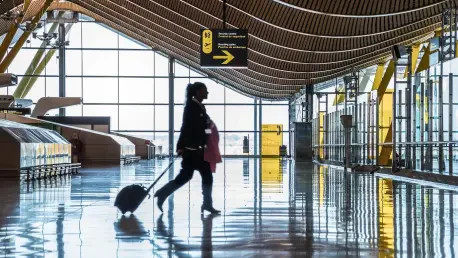Navigating Air Travel Risks: Newark’s Unresolved Issues
Every traveler seeks assurance that their journey will be safe, seamless, and uneventful. Yet, at Newark Liberty International Airport, a series of alarming incidents have raised questions about these expectations. Recent radar outages and near collisions at Newark have put the spotlight on the airport’s pressing safety concerns, demanding immediate action to avert further risks.
Understanding the Stakes: Why Airport Safety Matters
Airport safety goes beyond technicalities; it influences passenger trust and the overall experience of air travel. Efficient airport infrastructure ensures that passengers board their flights with confidence, knowing they are backed by reliable systems and protocols. Newark’s troubling experiences are not isolated but resonate with broader systemic inefficiencies within the aviation sector, revealing gaps that need urgent attention to protect passengers and maintain industry standards.
Breaking Down Newark’s Safety Dilemmas
Behind Newark’s safety challenges lies a web of communication failures and staffing deficiencies. The airport has suffered at least two radar outages and an alarming incident involving a near-plane collision due to air traffic controller fatigue. Outdated technology has exacerbated these issues, rendering Newark vulnerable to disruptions. Staffing shortages only compound these problems, increasing the workload and pressure on existing personnel, leading to a heightened risk of errors and slower response times.
Expert Voices: Critiques and Suggestions
Air traffic controller Jonathan Stewart has been vocal about Newark’s flawed practices, emphasizing the urgency of reform. Stewart critiques the airport’s management, pointing out insufficient operational processes and calls for leadership rather than superficial managerial increases. Transportation Secretary Sean Duffy echoes Stewart’s concerns, proposing practical changes to enhance safety. Their insights highlight the need for decisive leadership and proactive strategies to resolve Newark’s ongoing challenges.
Transformative Steps: Addressing Newark’s Problems
Efforts are underway to mitigate Newark’s aviation issues. The FAA has introduced measures such as increasing staffing levels and temporarily limiting flight operations to create space for critical improvements. A new runway is set to open shortly, aiming to ease congestion and pave the way for smoother operations. Further forward-thinking initiatives focus on modernizing outdated technology and optimizing recruitment practices for air traffic controllers, ensuring long-term sustainability and safety.
In reflecting on these issues, the path forward for Newark Liberty International Airport lies in a commitment to overhaul and modernization. By prioritizing leadership alongside infrastructural enhancements, Newark can transform its current challenges into opportunities for improvement. The narrative of safety is no longer confined to protecting passengers; it serves as a catalyst for systemic growth and the revival of trust in air travel, setting a precedent for airports nationwide.









